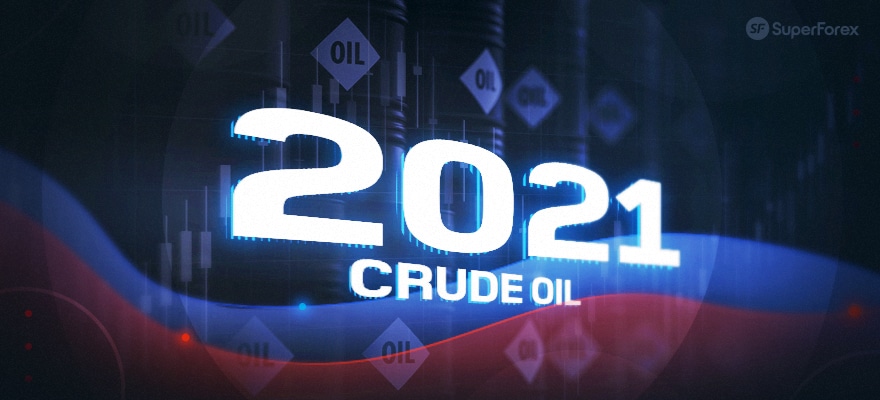Crude oil has always been a staple instrument in the portfolio of most traders. However, over the past couple of years this commodity has turned increasingly more volatile.
2020 was quite a nightmare for the oil market, but what does 2021 hold?
More of the same, most likely. The general trend for oil prices is one towards a decline.
On one hand, the Coronavirus pandemic is suppressing the demand for oil, driving prices down, and this will most probably continue next year.
On the other hand, the world seems increasingly comfortable with lower levels of oil. Even without Covid-19, experts predict that the demand will never be as high as in the past, so supply is going to have to continue adapting to that.
The Impact of Covid-19
The most important way in which the coronavirus pandemic has impacted oil prices is travel restrictions. People have travelled way less in 2020 as a whole.
Some are discouraged because a 14-day quarantine awaits them on arrival. Others cannot travel because flights between countries undergoing outbreaks are cancelled.
Until there is a working vaccine distributed to the people, the air travel sector will be under pressure. Less air travel is going to translate into lower demand, driving oil prices down.
OPEC and its allies (OPEC+) hold the power to regulate the market by cutting supply to match the subdued demand. They did so in the spring of 2020 as a response to the pandemic.
However, they all agreed to gradually increase their output levels from the summer onward.
The second wave currently going through Europe and North America may spook OPEC+ and inspire another production cut.
The current response of the organization could be a solid predictor of how it would act if subsequent waves of Covid-19 continue to trouble the world in 2021.
The Long-Term Decrease of Demand
According to the World Bank, the demand for crude oil will remain lower than its pre-pandemic levels for at least a few years.
Some of this can be attributed to the pandemic once again. Covid-19 could permanently change the ways of society. For example, businesses may be more comfortable with staff working from home from now on.
It is also becoming more acceptable to hold important meetings remotely, which may lead to less business travel.
In addition, many countries are pushing for the use of green energy to help slow down climate change. With the rise of hybrids and electric cars, we may have already seen the peak of crude oil consumption.
Bank Forecasts
The Wall Street Journal consulted some of the leading investment banks as to where oil is going in 2021. Citigroup, Barclays, and several others were optimistic about prices reaching above $50 per barrel, with an average around $55.
Yet Deutsche Bank, Commerzbank, and more disagreed. Their forecasts are for only a modest recovery to around $45 per barrel on average, or around $50 in the best case scenario.
Conclusions
All in all, there is hope that oil prices will lift off of their current average around $40 per barrel next year. We could see a $10 increase if the pandemic does not pressure the markets too much.
Prices will also receive a boost if OPEC+ does not get greedy and keeps supply under control. A $5 increase is more likely, as long as the coronavirus pandemic does not get worse in 2021.
You can stay current with the latest market developments and trade crude oil at superforex.com











